Abstract
Transpiration and temperatures of single, attached leaves of Xanthium strumarium L. were measured in high intensity white light (1.2 calories per square centimeter per minute on a surface normal to the radiation), with abundant water supply, at wind speeds of 90, 225, and 450 centimeters per second, and during exposure to moist and dry air. Partitioning of absorbed radiation between transpiration and convection was determined, and transpiration resistances were computed.
Leaf resistances decreased with increasing temperature (down to a minimum of 0.36 seconds per centimeter). Silicone rubber replicas of leaf surfaces proved that the decrease was due to increased stomatal apertures. At constant air temperature, leaf resistances were higher in dry than in moist air with the result that transpiration varied less than would have been predicted on the basis of the water-vapor pressure difference between leaf and air.
The dependence of stomatal conductance on temperature and moisture content of the air caused the following effects. At air temperatures below 35 C, average leaf temperatures were above air temperature by an amount dependent on wind velocity; increasing wind diminished transpiration. At air temperatures above 35 C, leaf temperatures were below air temperatures, and increasing wind markedly increased transpiration. Leaf temperatures equaled air temperature near 35 C at all wind speeds and in moist as well as in dry air.
Full text
PDF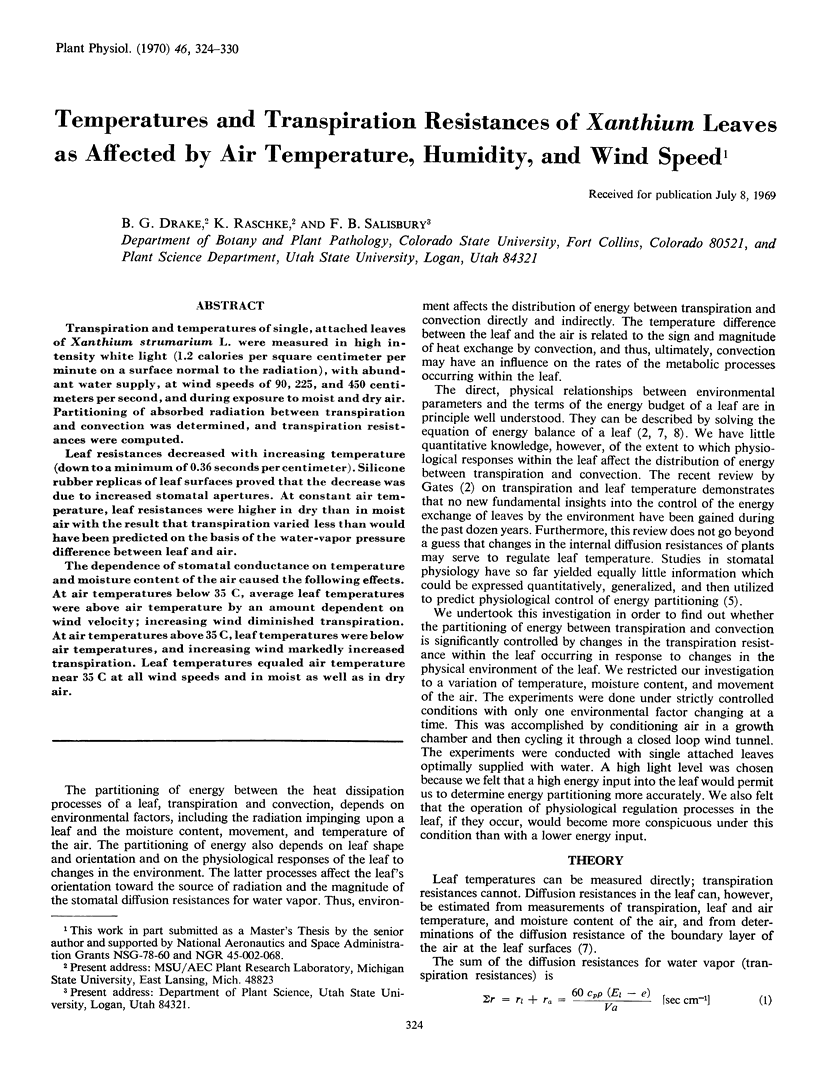
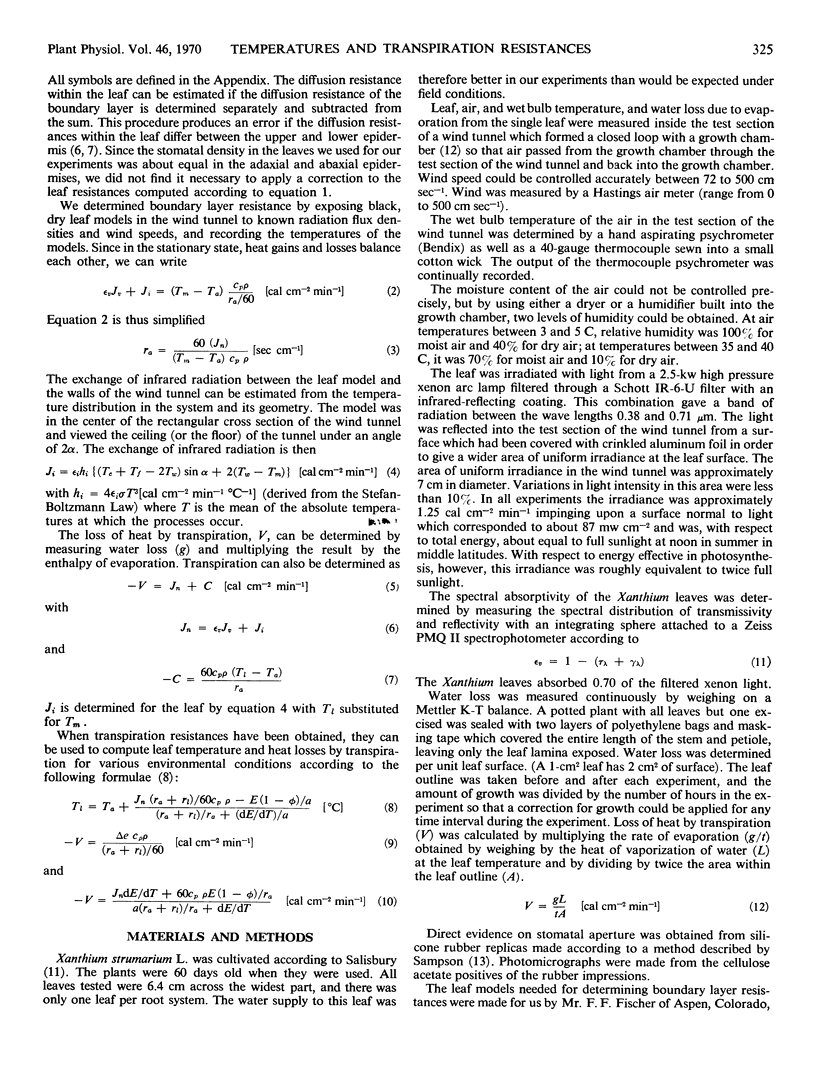
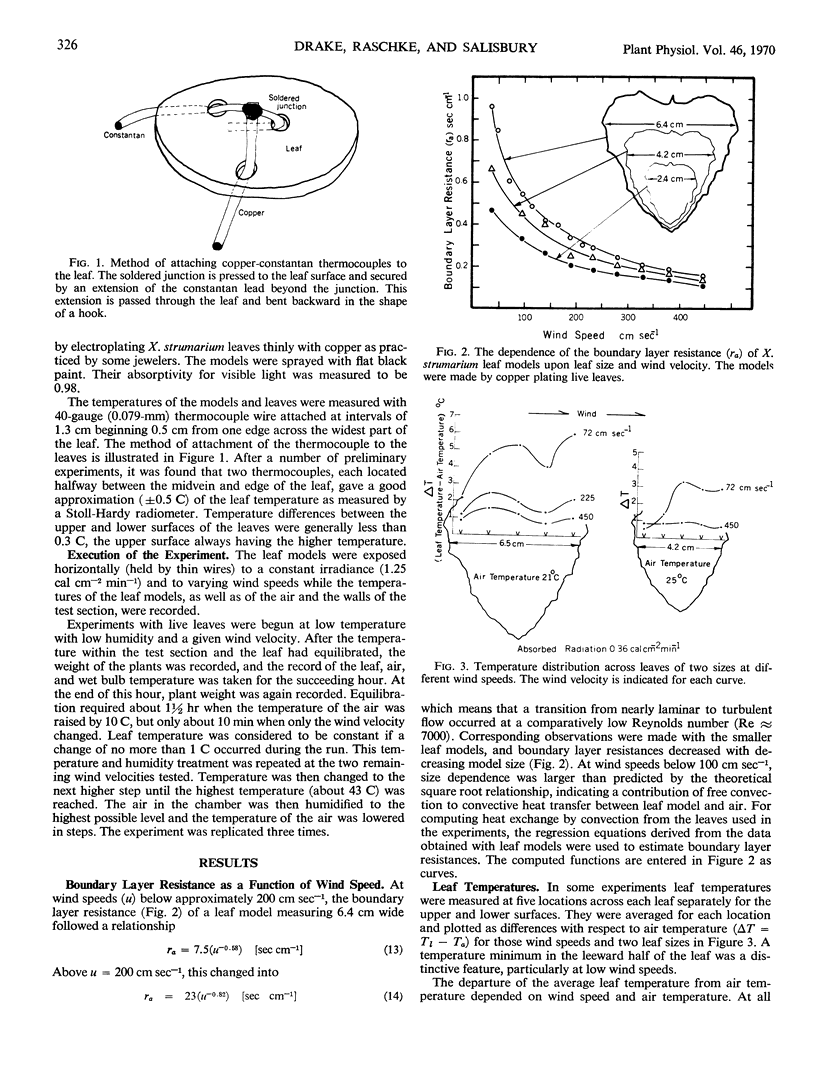
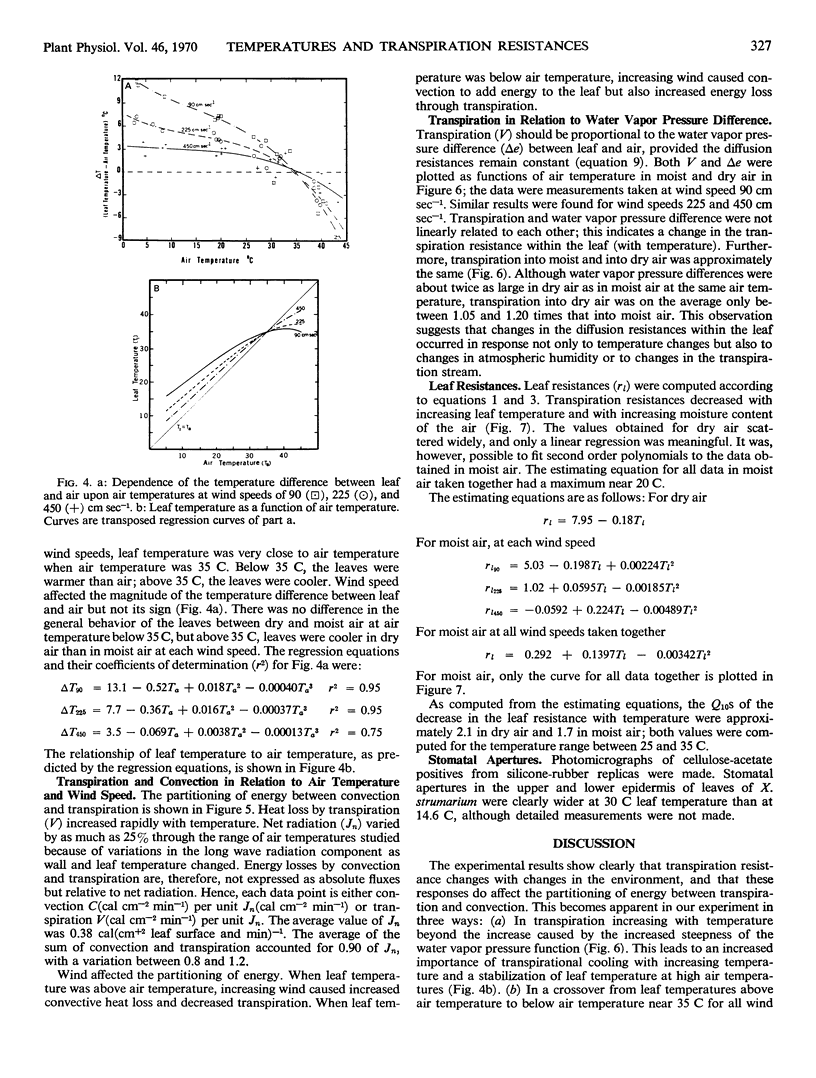

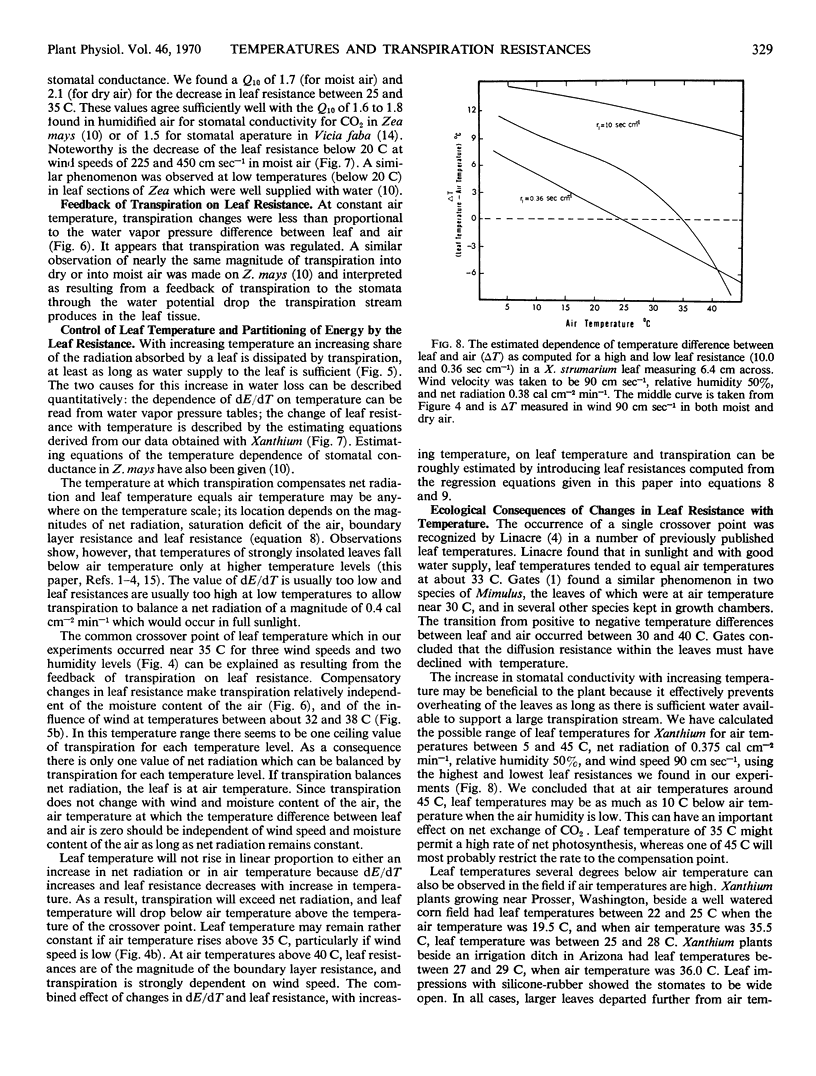
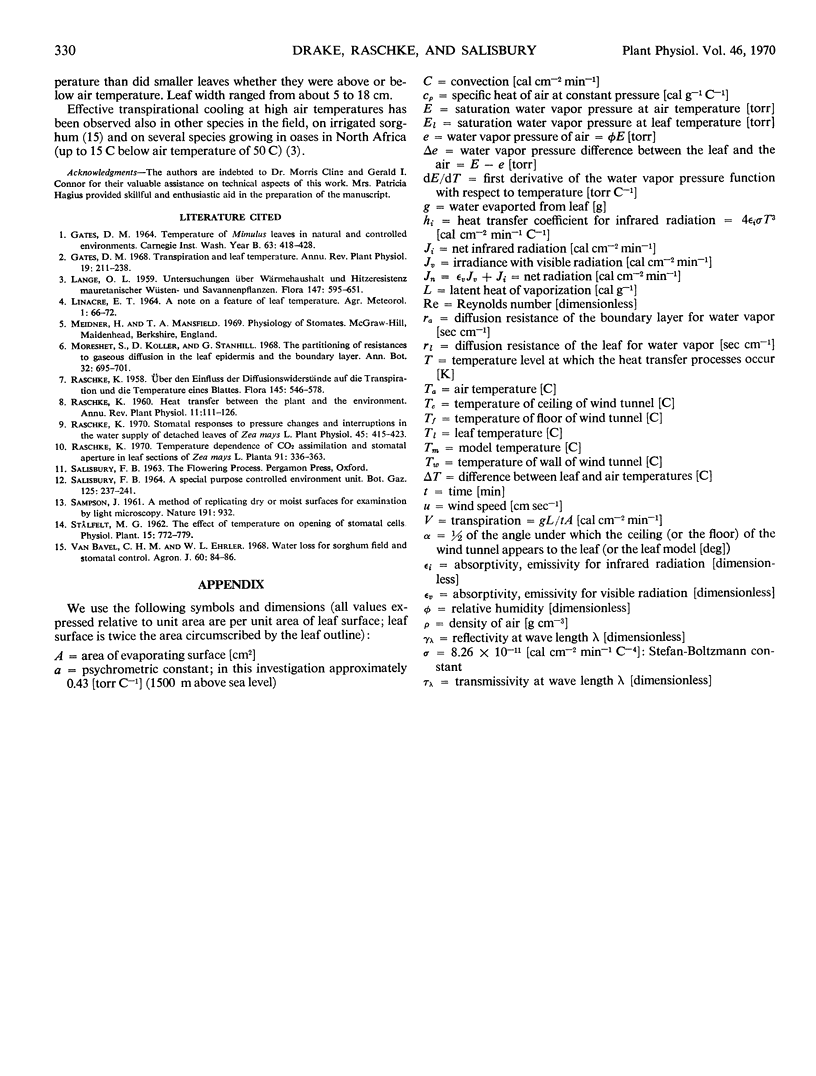
Selected References
These references are in PubMed. This may not be the complete list of references from this article.
- Raschke K. Stomatal Responses to Pressure Changes and Interruptions in the Water Supply of Detached Leaves of Zea mays L. Plant Physiol. 1970 Apr;45(4):415–423. doi: 10.1104/pp.45.4.415. [DOI] [PMC free article] [PubMed] [Google Scholar]
- SAMPSON J. A method of replicating dry or moist surfaces for examination by light microscopy. Nature. 1961 Aug 26;191:932–933. doi: 10.1038/191932a0. [DOI] [PubMed] [Google Scholar]


